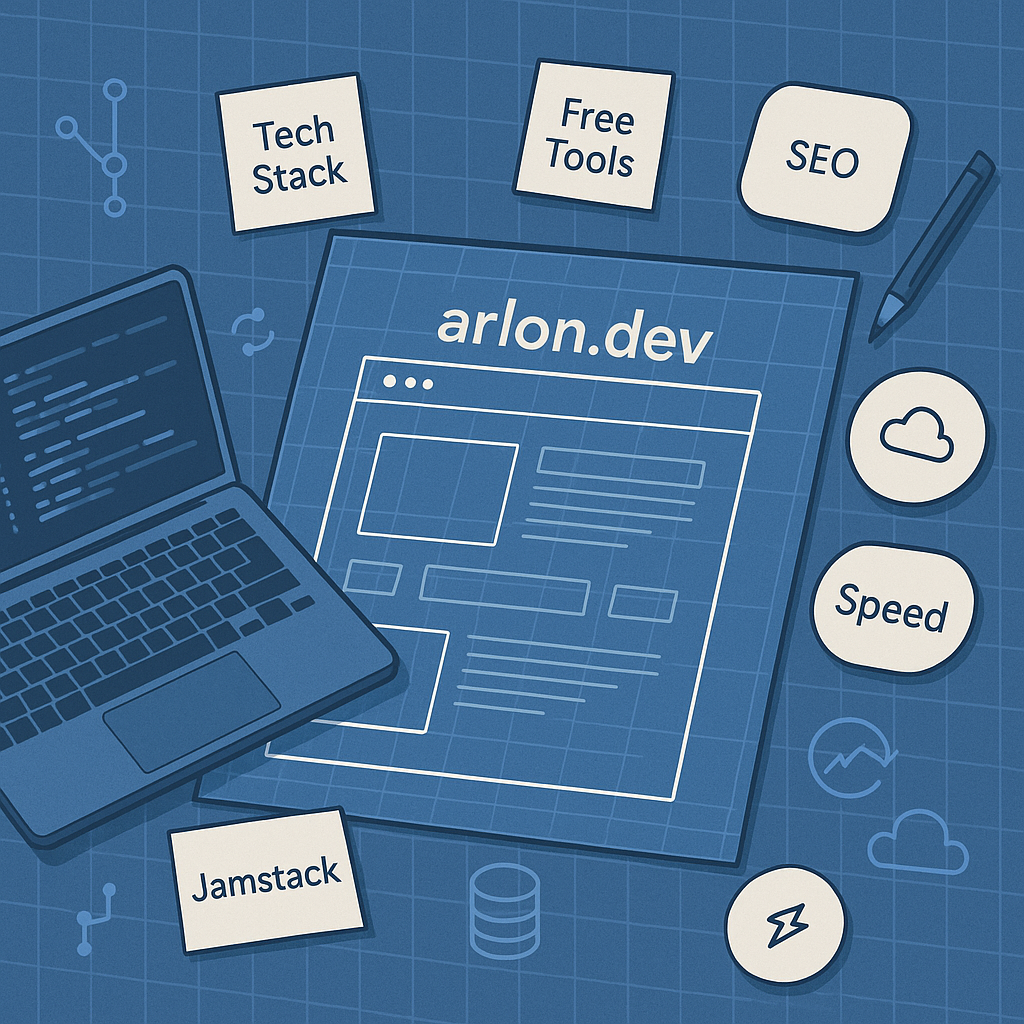The Planning, Tech Stack, and Tradeoffs (Building arlon.dev: Episode 1)

Every platform starts with a decision: what are you really building, and why?
For me, building arlon.dev was about more than launching another developer blog. It's my long-term platform to share engineering insights, document open-source work, and build a trusted resource for developers, SaaS founders, and technical leaders who care about scalable, pragmatic technology.
In this series, I'll share the full journey: from initial planning, tech stack decisions, tradeoffs, to the systems that power it. My goal is simple: provide transparent, actionable insights you can apply to build your own developer brand, open-source platform, or technical knowledge hub.
The Vision for arlon.dev
Before writing a single line of code, I set clear guiding principles for what I wanted arlon.dev to become:
- A Home for Engineering Knowledge: Curated, topic-driven content over random blog posts.
- Document My Journey: Share lessons learned from all the different types of projects I work on.
- Showcase OSS Projects: Provide long-form, practical documentation around projects.
- Stay Fast, Lightweight & Secure: SEO-friendly, easily maintainable, and performant.
- Scalable Complexity: Start simple, but architected to grow in features over time.
Key Decisions & Intentional Constraints
When building arlon.dev, I wasn't just setting up another personal website, I wanted to create something that could grow with me over time. The focus was on keeping things simple, easy to maintain, and fully under my control, without getting tied to unnecessary tools or platforms. Every choice from the tech stack to how content is managed, was made to keep things flexible, sustainable, and practical for the long run.
- Full Control Over Content and Infrastructure
No external CMS, no SaaS lock-ins, no headless vendors. Content lives directly in version-controlled Markdown files, fully owned and portable. - Fully Static, Predictable Hosting
Using static generation via Nuxt 3 gives me fast builds, predictable performance, and minimal hosting complexity. No Jamstack workarounds or dynamic dependencies unless truly necessary. - Simplicity First, Complexity Later
I deliberately avoided early feature creep: custom search engines, paid CMS integrations, personalization layers, or advanced interactive components. Only features that serve the core content experience are included from the start. - Optional Progressive Enhancements
Features like dark mode, basic filtering, and responsive design are supported - but always implemented in a way that keeps the core site lightweight, resilient, and maintainable.
Design Philosophy
Behind arlon.dev is a simple principle: modern software doesn't succeed through technology alone - it's the result of aligning architecture, security, infrastructure, and team practices. The content here centers around five core domains:
- Technical Strategy & Architecture - designing software systems that support long-term product and business goals.
- Cybersecurity - integrating security at every layer, from architecture to operations.
- Platform Engineering - creating robust foundations that scale predictably as products grow.
- Infrastructure - managing cloud-native resources with automation and observability at the core.
- Engineering Practice - empowering teams with practical workflows, tooling, and engineering discipline.
These themes reflect the real-world intersections of technical leadership, platform design, and operational execution that many organizations face.
In the end, most of building a technical platform comes down to restraint — knowing what to leave out, what to control directly, and what to keep simple.
That's the foundation I'm setting with arlon.dev.
Not because it's perfect, but because it's designed to adapt, evolve, and stay sustainable as complexity inevitably grows.